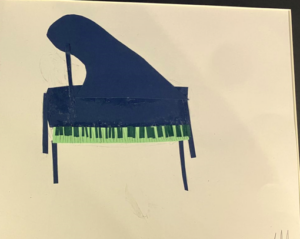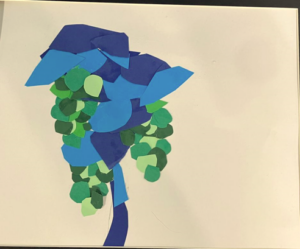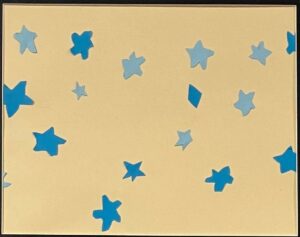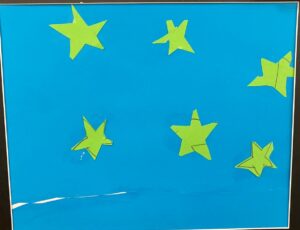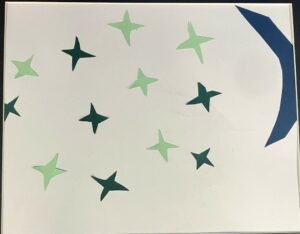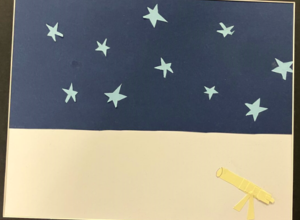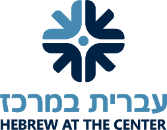Kinesthetic Midrash
Goldstein and North Campus music teacher Rabbi Mat Tonti have also been collaborating for several years to implement a “Kinesthetic Midrash” curriculum in Grade 5 Judaics. In 2023, they received a grant from the Covenant Foundation to further develop the program. In this program, students set Torah text to rhythm and movement, creating collaborative class performances.
In September, Grade 5 students completed their first of what will hopefully be several Kinesthetic Midrash units. They began by studying one pasuk, or verse—Shemot 1:7.
וּבְנֵי יִשְׂרָאֵל פָּרוּ וַיִּשְׁרְצוּ וַיִּרְבּוּ וַיַּעַצְמוּ בִּמְאֹד מְאֹד וַתִּמָּלֵא הָאָרֶץ אֹתָם
And the Israelites were fruitful, they swarmed, they increased, they grew strong, very much; the land was filled with them.
This pasuk is important; it leads to Egypt’s new Pharaoh feeling threatened by the Israelites’ strength and, famously, enslaving them. It also rhymes, making it catchy to recite.
Next, students learned to recite the pasuk in rhythm and were introduced to various movements and formations for project inspiration. They practiced moving in unison, staggered, or individually; in small groups, a circle, or a line; and softly, boldly, sharply, smoothly, quickly, or slowly. Finally, groups of students created timed rhythmic movements depicting important verbs from the pasuk: growing, strengthening, and scattering.
In the next lessons, students split into groups representing either Israelites or Egyptians and developed movements depicting how each group might feel about the events of the pasuk. They combined their movements into a class dance sequence, and after a few rehearsal sessions, presented their final products to their teachers. Watch the video of their performances below:



